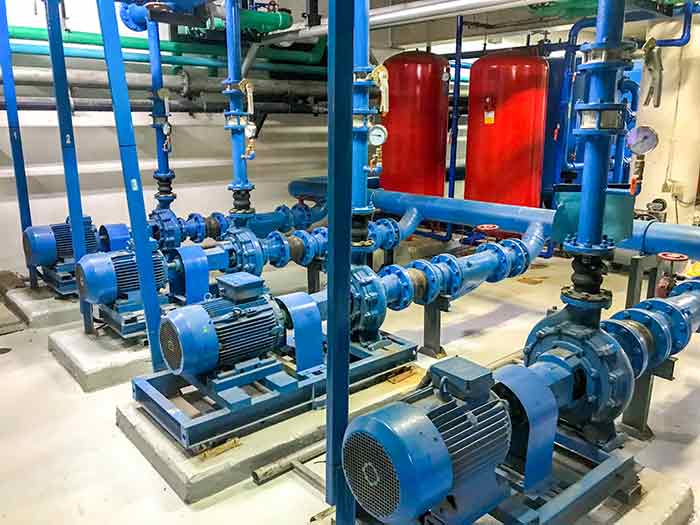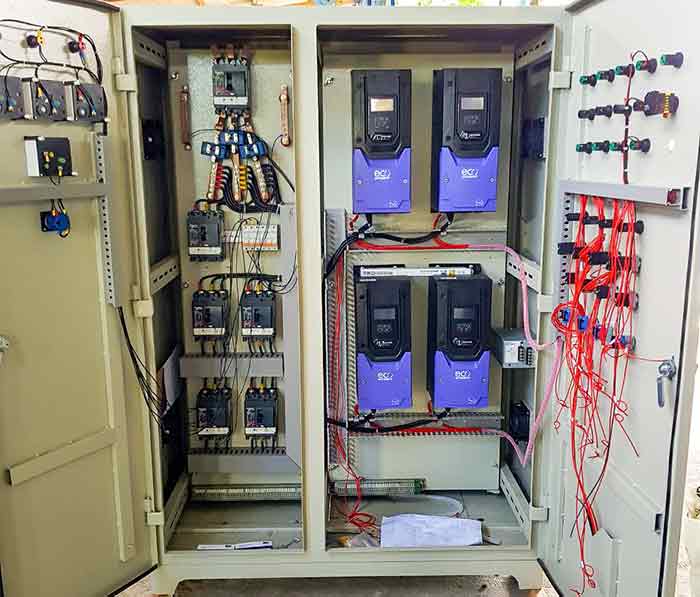In the increasingly competitive domestic and international processing markets, businesses are constantly looking at ways to reduce costs and increase profitability. The pump systems industry is helping end users achieve this through the integration of technology, such as variable frequency drives (VFD).
VFDs designed specifically for pump control can help achieve energy savings of at least 20 to 30 percent in most pump control applications.
Combined with associated technology, some VFDs can ensure efficient control of multiple pumps as well as avoiding pump downtime by reducing blockages, detecting burst pipes and avoiding dry runs.
Here are two case studies showing how VFDs helped save money and increase efficiency.
 Image 1. A shopping mall installed four VFDs for each pump, giving more control over how much water is pumped. (Images courtesy of Invertek Drives)
Image 1. A shopping mall installed four VFDs for each pump, giving more control over how much water is pumped. (Images courtesy of Invertek Drives)VFDs Keep Golf Course Green
One example is a Professional Golfers’ Association championship 18-hole golf course that had been using a single 150-horsepower (hp) pump and a 150-hp drive to control its underground irrigation system serving its 72-hectare (178 acre) course. The way the system was set up meant the entire course was irrigated even if greenkeepers wanted to target certain areas.
If the existing pump or drive was out of service, the whole system would be inoperable, leaving the course without irrigation. The system was also inefficient, using water that was not needed.
Four VFDs were introduced as part of the solution. The four VFDs are now used to control four 25-hp pumps that target zoned areas of the course.
The VFD technology allows multiple pumps to work together to ensure optimized efficiency.
The system is arranged so that one VFD is the master and the other three follow behind it. The master controls the other VFDs to maintain a constant system pressure within the pump system.
The master VFD also ensures that if one or more drives is out of service, the remaining available drives can take control of the pumping requirements, ensuring continued irrigation for the course.
The system can also detect low pressure, such as a leak in the system, blockages and dry-runs. This ensures that the motors are not placed under stress, reducing maintenance or replacement costs.
The new targeted approach for the irrigation system means the golf club can cut water usage and reduce costs overall. The golf course noted savings that were an immediate return on investment.
 Image 2. The VFDs can be controlled independently depending on demand.
Image 2. The VFDs can be controlled independently depending on demand.Slashing Costs at Shopping Mall
In another case, a large shopping mall achieved 30 percent savings in water and energy costs by implementing VFDs. The retail location reduced its monthly $448,900 utility bill almost immediately.
At the shopping mall, there was no control over how much water was being pumped through the system compared to the actual demand. So, in this instance, the system had at least three pumps that were in constant use, even at quiet times.
Four VFDs were installed for each pump. Now, with the use of VFD technology, each of the four pumps can be controlled independently depending on demand.
This control ensures that the optimum number of pumps is in operation. When demand falls, some pumps can be put to sleep or the speed can be reduced. In some cases at the shopping mall, on average only two pumps have been required. This results in lower energy consumption and less wear and tear, extending the life of the pumps.
In addition, the system is never shut down. If a drive or pump is out of service, then operation transfers to another drive or pump. The drives can also detect and clear pump blockages, provide dry-run and burst-pipe protection.
The result is an optimized water supply ensuring little waste, reduced costs and increased savings.
While the mall’s owners had hoped for 15 percent savings, they say 30 percent savings have been realized since the drives were installed in January 2018.


